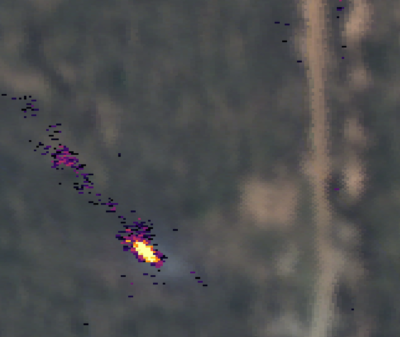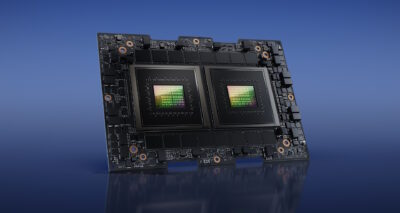From climate modeling to endangered species conservation, developers, researchers and companies are keeping an AI on the environment with the help of NVIDIA technology.
They’re using NVIDIA GPUs and software to track endangered African black rhinos, forecast the availability of solar energy in the U.K., build detailed climate models and monitor environmental disasters from satellite imagery.
This Earth Day, discover five key ways AI and accelerated computing are advancing sustainability, climate science and energy efficiency.
1. Applying AI to Biodiversity Conservation, Sustainable Agriculture
To protect endangered species, camera-enabled edge AI devices embedded in the environment or on drones can help scientists observe animals in the wild, monitoring their populations and detecting threats from predators and poachers.
Conservation AI, a U.K.-based nonprofit, has deployed 70+ cameras around the world powered by NVIDIA Jetson modules for edge AI. Together with the NVIDIA Triton Inference Server, the Conservation AI platform can identify species of interest from footage in just four seconds — and help conservationists detect poachers and rapidly intervene. Another research team developed an NVIDIA Jetson-based solution to monitor endangered black rhinos in Namibia using drone-based AI.

And artist Sofia Crespo raised awareness for critically endangered plants and animals through a generative AI art display at Times Square, using generative adversarial networks trained on NVIDIA GPUs to create high-resolution visuals representing relatively unknown species.
In the field of agriculture, Bay Area startup Verdant and smart tractor company Monarch Tractor are developing AI to support sustainable farming practices, including precision spraying to reduce the use of herbicides.
2. Powering Renewable Energy Research
NVIDIA AI and high performance computing are advancing nearly every field of renewable energy research.
Open Climate Fix, a nonprofit product lab and member of the NVIDIA Inception program for startups, is developing AI models that can help predict cloud cover over solar panels — helping electric grid operators determine how much solar energy can be generated that day to help meet customers’ power needs. Startups Utilidata and Anuranet are developing AI-enabled electric meters using NVIDIA Jetson to enable a more energy efficient, resilient grid.
Siemens Gamesa Renewable Energy is working with NVIDIA to create physics-informed digital twins of wind farms using NVIDIA Omniverse and NVIDIA Modulus. U.K. company Zenotech used cloud-based GPUs to accurately simulate the likely energy output of a wind farm’s 140 turbines. And Gigastack, a consortium-led project, is using Omniverse to build a proof of concept for a wind farm that will turn water into hydrogen fuel.
Researchers at Lawrence Livermore National Laboratory achieved a breakthrough in fusion energy using HPC simulations running on Sierra, the world’s sixth-fastest HPC system, which has 17,280 NVIDIA GPUs. And the U.K.’s Atomic Energy Authority is testing the NVIDIA Omniverse simulation platform to design a fusion energy power plant.
3. Accelerating Climate Models, Weather Visualizations
Accurately modeling the atmosphere is critical to predicting climate change in the coming decades.
To better predict extreme weather events, NVIDIA created FourCastNet, a physics-ML model that can forecast the precise path of catastrophic atmospheric rivers a full week in advance.
Using Omniverse, NVIDIA and Lockheed Martin are building an AI-powered digital twin for the U.S. National Oceanic and Atmospheric Administration that could significantly reduce the amount of time necessary to generate complex weather visualizations.
An initiative from Northwestern University and Argonne National Laboratory researchers is instead taking a hyper-local approach, using NVIDIA Jetson-powered devices to better understand wildfires, urban heat islands and the effect of climate on crops.
4. Managing Environmental Disasters With Satellite Data
When it’s difficult to gauge a situation from the ground, satellite data provides a powerful vantage point to monitor and manage climate disasters.
NVIDIA is working with the United Nations Satellite Centre to apply AI to the organization’s satellite imagery technology infrastructure, an initiative that will provide humanitarian teams with near-real-time insights about floods, wildfires and other climate-related disasters.

NVIDIA Inception member Masterful AI has developed machine learning tools that can detect climate risks from satellite and drone feeds. The model has been used to identify rusted transformers that could spark a wildfire and improve damage assessments after hurricanes.
San Francisco-based Inception startup Orbital Sidekick operates satellites that collect hyperspectral intelligence — information from across the electromagnetic spectrum. Its NVIDIA Jetson-powered AI solution can detect hydrocarbon or gas leaks from this data, helping reduce the risk of leaks becoming serious crises.
5. Advancing Energy-Efficient Computing
On its own, adopting NVIDIA tech is already a green choice: If every CPU-only server running AI and HPC worldwide switched to a GPU-accelerated system, the world could save around 20 trillion watt-hours of energy a year, equivalent to the electricity requirements of nearly 2 million U.S. homes.

Semiconductor leaders are integrating the NVIDIA cuLitho software library to accelerate the time to market and boost the energy efficiency of computational lithography, the process of designing and manufacturing next-generation chips. And the NVIDIA Grace CPU Superchip — which scored 2x performance gains over comparable x86 processors in tests — can help data centers slash their power bills by up to half.
In the most recent MLPerf inference benchmark for AI performance, the NVIDIA Jetson AGX Orin system-on-module achieved gains of up to 63% in energy efficiency, supplying AI inference at low power levels, including on battery-powered systems.
NVIDIA last year introduced a liquid-cooled NVIDIA A100 Tensor Core GPU, which Equinix evaluated for use in its data centers. Both companies found that a data center using liquid cooling could run the same workloads as an air-cooled facility while using around 30% less energy.
Bonus: Robot-Assisted Recycling on the AI Podcast
Startup EverestLabs developed RecycleOS, an AI software and robotics solution that helps recycling facilities around the world recover an average of 25-40% more waste, ensuring fewer recyclable materials end up in landfills. The company’s founder and CEO talked about its tech on the NVIDIA AI Podcast:
Learn more about green computing, and about NVIDIA-accelerated applications in climate and energy.
